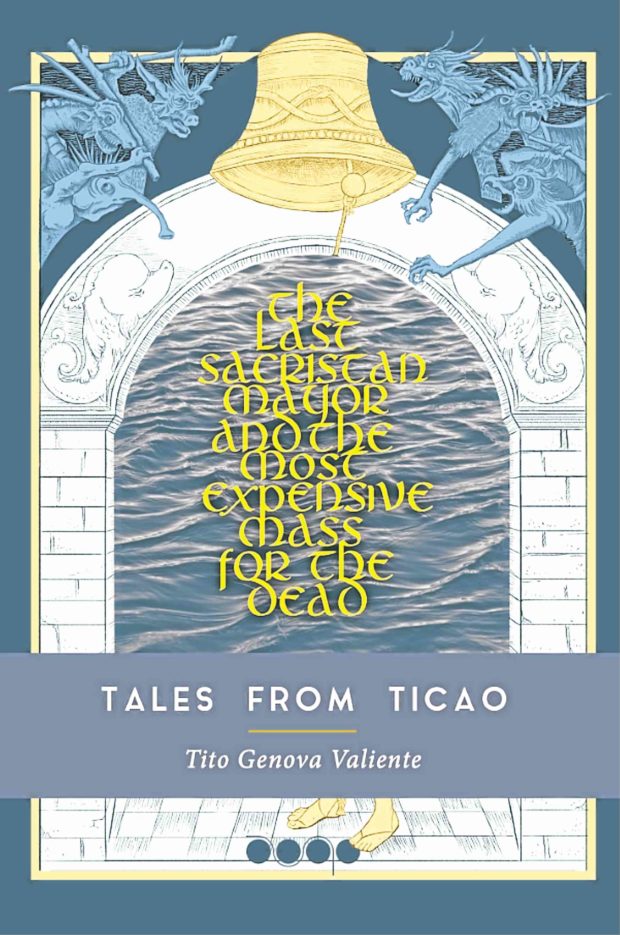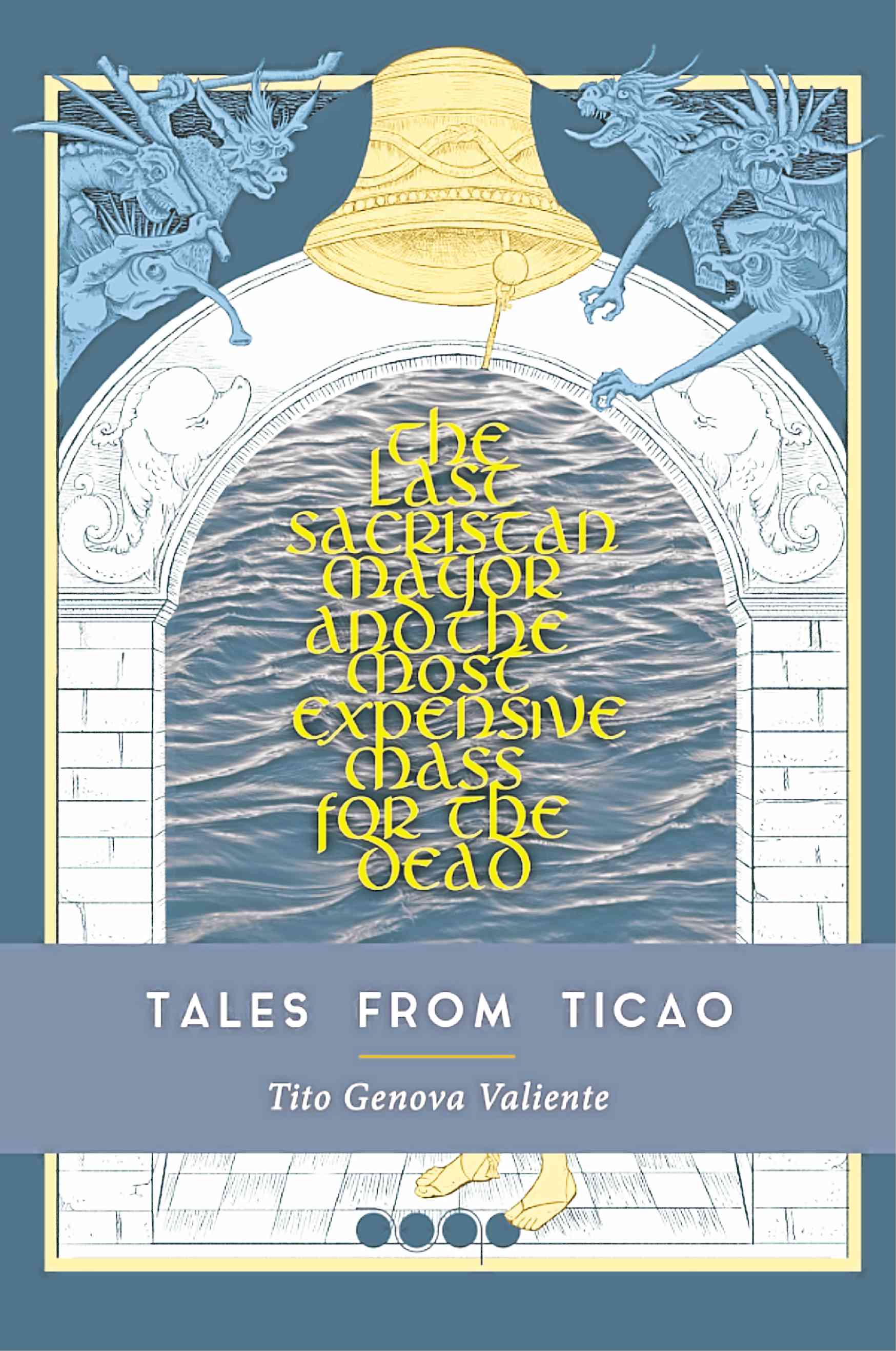
Here’s a curious new book with demons flanking a church bell on its cover. Small like a prayer book, its kilometric title—“The Last Sacristan Mayor and the Most Expensive Mass for the Dead: Tales of Ticao”—had to be squeezed under the arch of an old church window.
But this book with only 72 pages is so alive, you can almost hear that church bell of melted gold and silver coins ring as the book opens to a little-known village tucked into the province of Masbate.
“Tales of Ticao” turns out to be a strangely consistent story of our islands populated by enchanted beings. Countless oral tales about their invisible presence in trees, mounds, caves and churches (sometimes one and the same) all over our archipelago mean that our people have known these creatures for a very long time.
Banishing this childhood reality is the usual lot of schooled Filipino children. “Tales of Ticao” travels in the opposite direction. Its author, Tito Valiente, born and raised in Ticao for the first seven years of his life, now returns as an anthropologist and folk historian. Combining fond memories of his remote birthplace with decades of schooling and teaching in the outside world—Ateneo de Naga, Ateneo de Manila, Rikkyo University in Tokyo—creates a rare blend of storytelling.

Like a fairy tale
Home to reclaim family land from trespassers, what happens next is like a fairy tale. It begins with his grown man’s tears at the sight of an ancient atimoya (aka atis) tree he loved in childhood still standing in his grandparents’ backyard “because enchanted beings live there,” a relative said.
The moment was numinous. The westernized scholar was ready to mine memories of the magical world of his boyhood. But what he thought was simple field work gathering his island’s folk tales turned out to be a return to deeper origins and “[knowing] the place for the first time,” as poet T.S. Eliot put it.
It starts with his great-grandfather’s devotion to ringing the church bell for early morning Mass every day, in the process driving away a demon tormenting the priest.
When came Lolo Doroy’s turn to die, a new priest charges exorbitantly for his funeral despite his years of service. But as the bell rings for Lolo Doroy, that same demon scampers away as an old soul rooted in another world in a ship of the dead gliding over the cave of the big serpent Tandayag.
This serpent of ever-renewing Life in Death snakes from end to end of this book. Young Concordia next dances in frenzy with the Prince of Engkantos until her old mother consents to their marriage. As a child, the author himself hadn’t even learned to cry when he sees his first yaya, Dolores, in a white coffin surrounded by mourners. Now Life reasserts itself as memories of her heavenly cooking overwhelm him in this first experience of Death.
Strange romance
Best of these tales is the invisible penetrating the visible in near trance-writing on the strange romance of an enchanted earth maiden, Maria, and the handsome half-horse, half-man Onglo. Making it even stranger is Valiente’s source for this love story—his own second yaya, Erlina, suffering from the welts and bruises of lovemaking with the invisible Onglo. After she suddenly disappears one day, the people of Ticao attest to seeing her in a boat pulled by a half-man, half-horse where the river meets the sea.
What are we to make of such tales written by an anthropologist reared in island myths but educated in western reality? I can only point to Valiente’s last tale about the Kataw—a truly strange creature, small as a winged dragonfly with a human face and legs—that he saw in heavy rain when he was five.
“I am your kataw,” it told him, promising to come back when he was “alone once more in the big house when the strongest and biggest rains come again.” The little boy waits until the next big rain, but never sees his kataw again. What he found “swimming in the currents from the holes created by the strong rains” was a tiny shimmering scale that looked like his kataw’s.
He picks up the shimmering scale, puts it in his pocket and then a small box his grown-up self keeps to this day—tangible proof that there’s more in a child’s hidden world than a grownup can even remember without an enchanted home to return to. —CONTRIBUTED
You can order this book via [email protected]









































